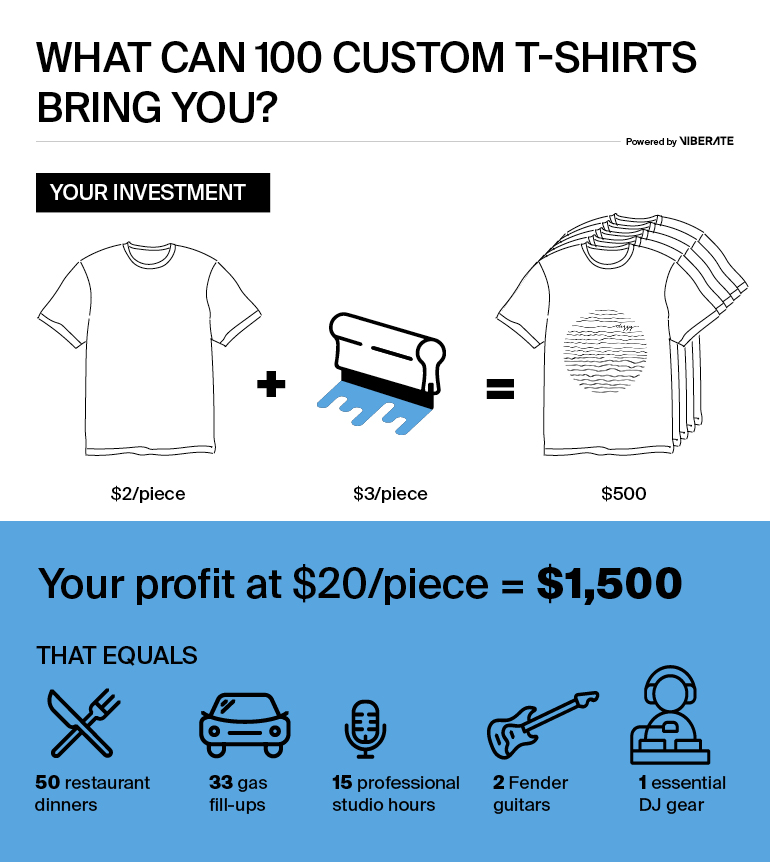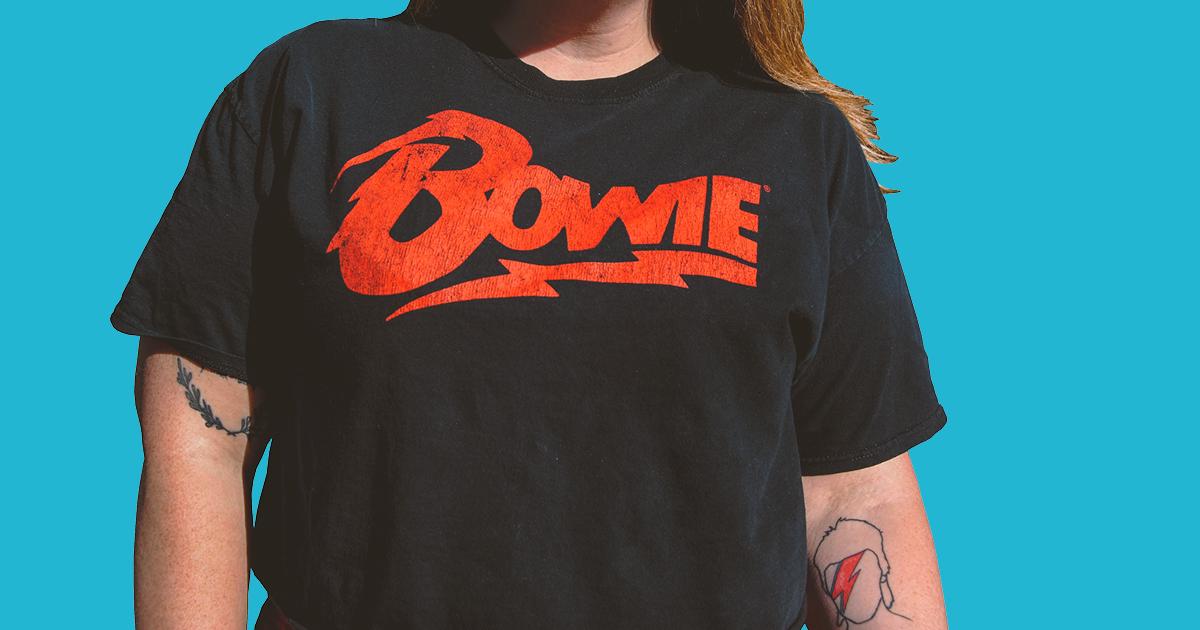How to Make and Sell Your Own Merch
Why does a musician need merchandise? In one of our previous articles, we covered the importance of establishing yourself as a unique brand. This “package” of music, image and messages makes you and your art identifiable, and your die-hard fans will surely be the first ones to proudly display their support by brandishing T-shirts with your name on it and influencing others to give you a listen.
From a marketing perspective, a well-designed T-shirt won’t go out of style, neither on Instagram nor in real life any time soon. Consider this: a memorabilia Led Zeppelin T-shirt reportedly fetched $10,000 in 2011, breaking the record for the most expensive band T-shirt ever sold and proving that merch can rake in serious revenue.
In this guide, we'll answer the following questions:
➡️ How much money is in merch?
➡️ What kind of merch should you make, and how to price it?
➡️ Where and when to start with merch?
➡️ How to promote it?
#1 How much money is in merch?
In one of his interviews, Dell Furano, an innovator of the concert performance merchandise industry, explained that just merch licensing generates around $12B each year. While selling a music act’s T-shirts was deemed totally uncool in the 1970s, the next decade saw an absolute boom in the retail market thanks to New Kids on the Block and other prominent boy bands, who – dare we say – were more about turning profit than genuine artistic expression. They were among the first to go all-out with sneakers, action figures, breakfast cereals, notebooks, big brand co-ops, you name it. So the next time you see a, say, Ramones T-shirt in a global clothes retailer store, you know who’s behind it all: the boy bands.

Here’s an interesting item from Metallica’s online store. “Boy baaaands!” *shakes fist at sky*
👉 Revenue income: Touring and merch
While it’s possible to monetize on streaming platforms, a considerable amount of an artist's revenue comes from live gigs. According to IPFI Global Music Report 2017, the gross revenue from concerts raked in almost $5B – about one third the amount of recorded music revenue. The aforementioned Dell Furano also points out that the average touring artist can earn anywhere between 10–35% of their revenue through merch sales, meaning that the biggest names can expect hundreds of thousands of dollars, though the numbers are of course lower for artists on the rise.

Or, if you’re Kanye, earn as much as you want, as this baby was a steal at $260. Source.
It’s hard to define exactly how much income you can count on, since some venues can charge you for the merch table, while others (often smaller ones) give you a place for free. Same goes for online sales – each country has its own VAT systems and delivery options, so we won’t get into too much detail in this article, just give you a heads-up to look into it when creating and pricing your perfect merch. If the Covid-19 lockdown has proven anything, it’s that strategic online sales are more than valuable. We’re sure many artists have learned not to count solely on live gigs for income, but to reduce the long-term risk by selling merch and monetizing their online presence as best as they can.
#2 What kind of merch should you make, and how to price it?
Designing kickass custom merch can help you in three ways: promoting your image, creating a stronger bond with your fans and supporters, and raising funds for your next project. As the competition is fierce, don’t be afraid to get creative. There’s patches, zines, skateboards, pins, stickers, slipmats for DJs, phone cases, printed-on phone camera covers and lots of other stuff waiting for your hacks!
When in doubt, remember that Metallica isn’t above putting their logo on baby bibs, thus branding the new metalhead generation, and that Kanye West knows how a strong “bootleg wordart” vibe can immediately spark the internet’s interest in all things meme.

Just be extra careful before going to print, as Jimmy Eat World learned the hard way. Source: Twitter.
👉 And pricing?
We asked around for advice and got these rough guidelines:
- The smaller stuff: $2–$10. This includes stickers, guitar picks, badges and posters (though large, high-quality posters could also cost as much as $20).
- The music: $10–? This includes CDs, cassette tapes, vinyl and download cards. You can price your CDs and vinyl like you would online, starting from $10 and going to whatever seems fair to you.
- The wearables: $20–$50. Those include T-shirts, hats, tote bags and hoodies. Again, the price also depends on the quality of material, but be advised: the humble T-shirt is the all-time fan favorite, so a lit design can bring you far.
Bundle discounts are also a good idea, as some fans will be buying more stuff at once.

Numbers are estimated from US average prices in May 2020.
#3 Where and when to start with merch?
In our interview, Dutch DJ Mike Williams explained he launched his own merch when he noticed fans wearing self-made T-shirts and hoodies with his logo on them. Together with his sisters, they soon launched their own “Milliams” brand, with one side of it covering Mike’s official merch, while the other side extends into an independent clothing brand that can be worn by fans and non-fans alike. “It’s a different business, and it’s a big business. To me, music is number one, but it’s nice to have something like this as well,” he adds.
Designing custom T-shirts therefore seems to be the logical first step. Here are the basic things to watch out for. Mind the print size. Bigger print can be better, as your design or logo will be more noticeable. Choose one-sided print to avoid high costs. Focus on one or two colors, because, again, costs, and order in bulk. Handling a single order of 100 T-shirts is cheaper than creating singular artisanal tees.
There’s lots of sites like Merch.ly, Represent and Teemill that can handle your production and shipping, so do some internet sleuthing and you’re bound to find a good deal.

#4 How to promote it?
After all is done, don’t forget to promote your stuff. Use your social media, website, even your friends to get the word out there. Wear your own stuff at gigs, livestreamed or live, and be ready to put elbow grease into this promo work. Above all, use your imagination, as the best ideas are found in the most unexpected of places.
The right approach to promotion can help you grow – and we're here to help you connect easier. If you're a musician, your page, automatically updated with all your latest stuff, is probably already on Viberate. You can send it to promoters, talent scouts, and A&Rs, and use the time you'd otherwise spend updating your onepager on making music.
Check it out and sign-up to claim it to unlock loads of handy features, then try the rest of them in a free trial.
Cover: Chelsea Massengill (Unsplash)

Premium music analytics, unbeatable price: $19.90/month
11M+ artists, 100M+ songs, 19M+ playlists, 6K+ festivals and 100K+ labels on one platform, built for industry professionals.



